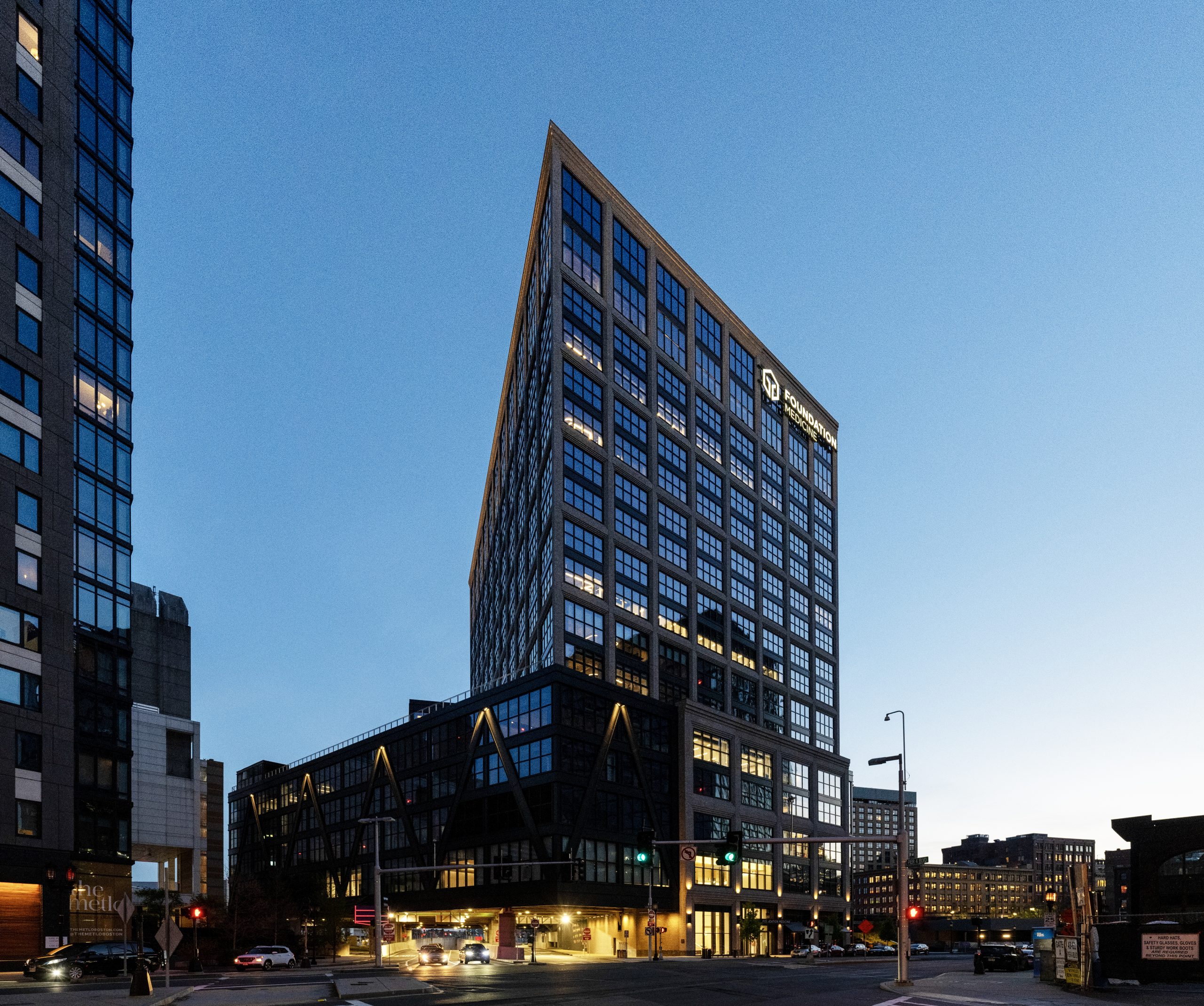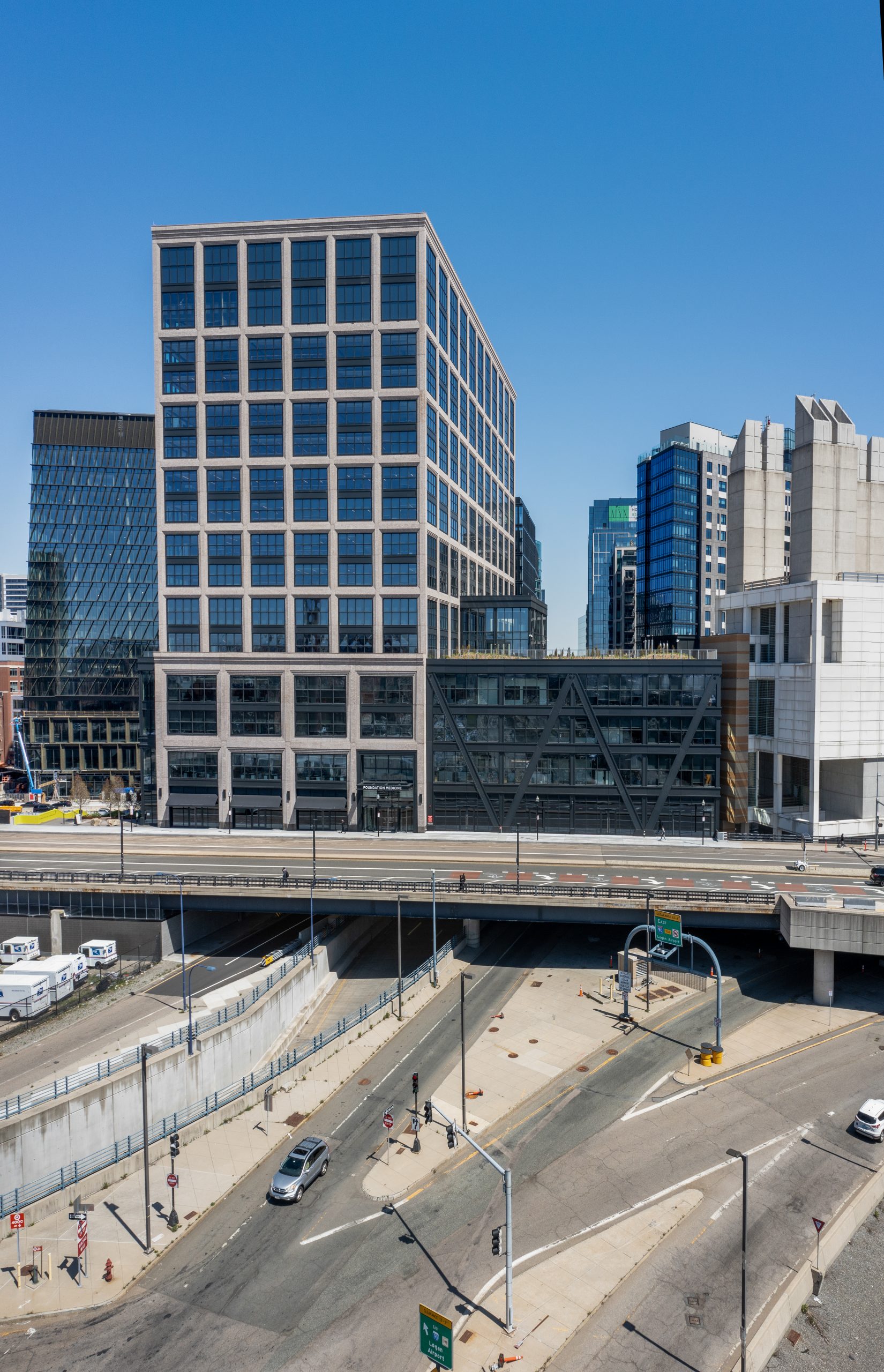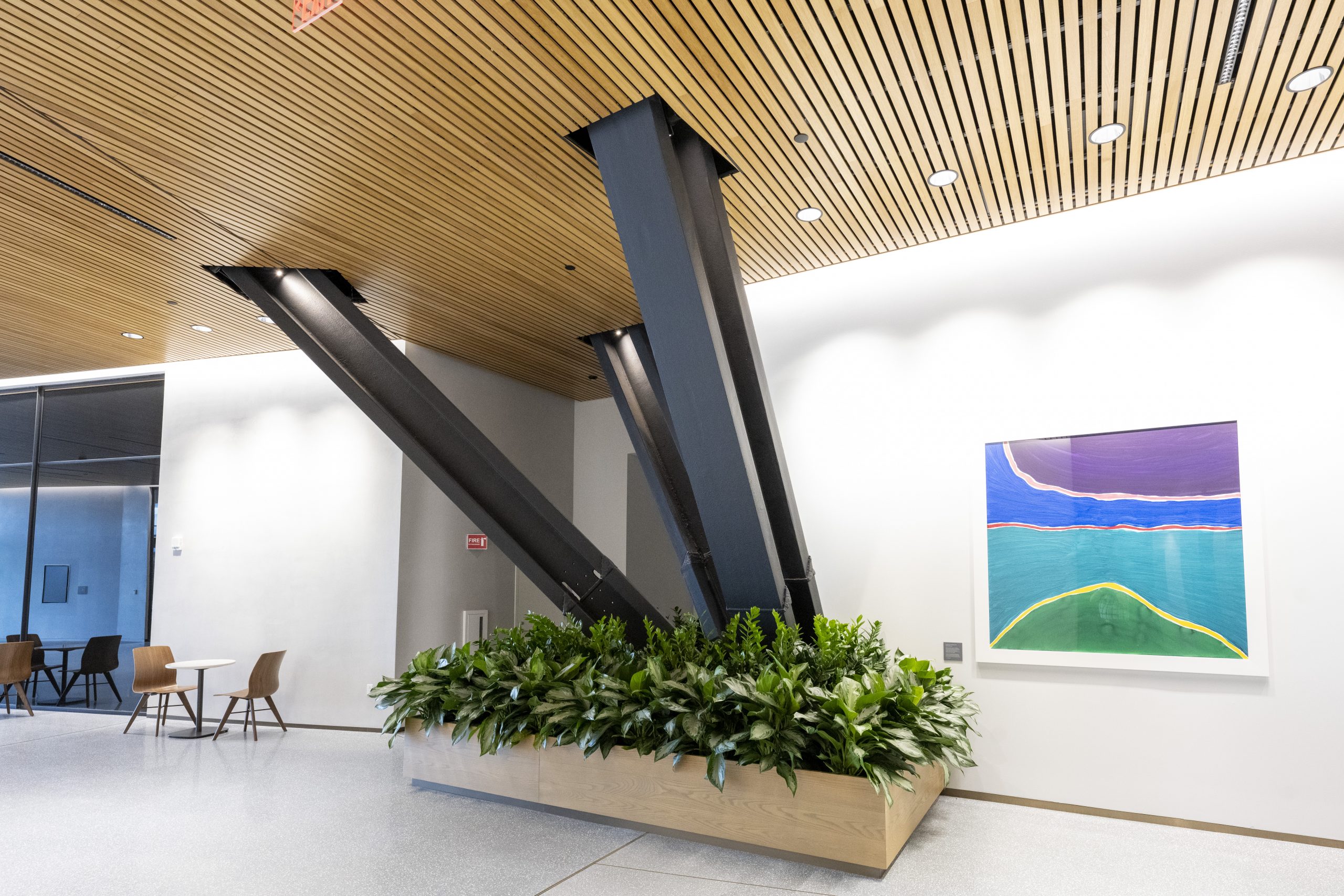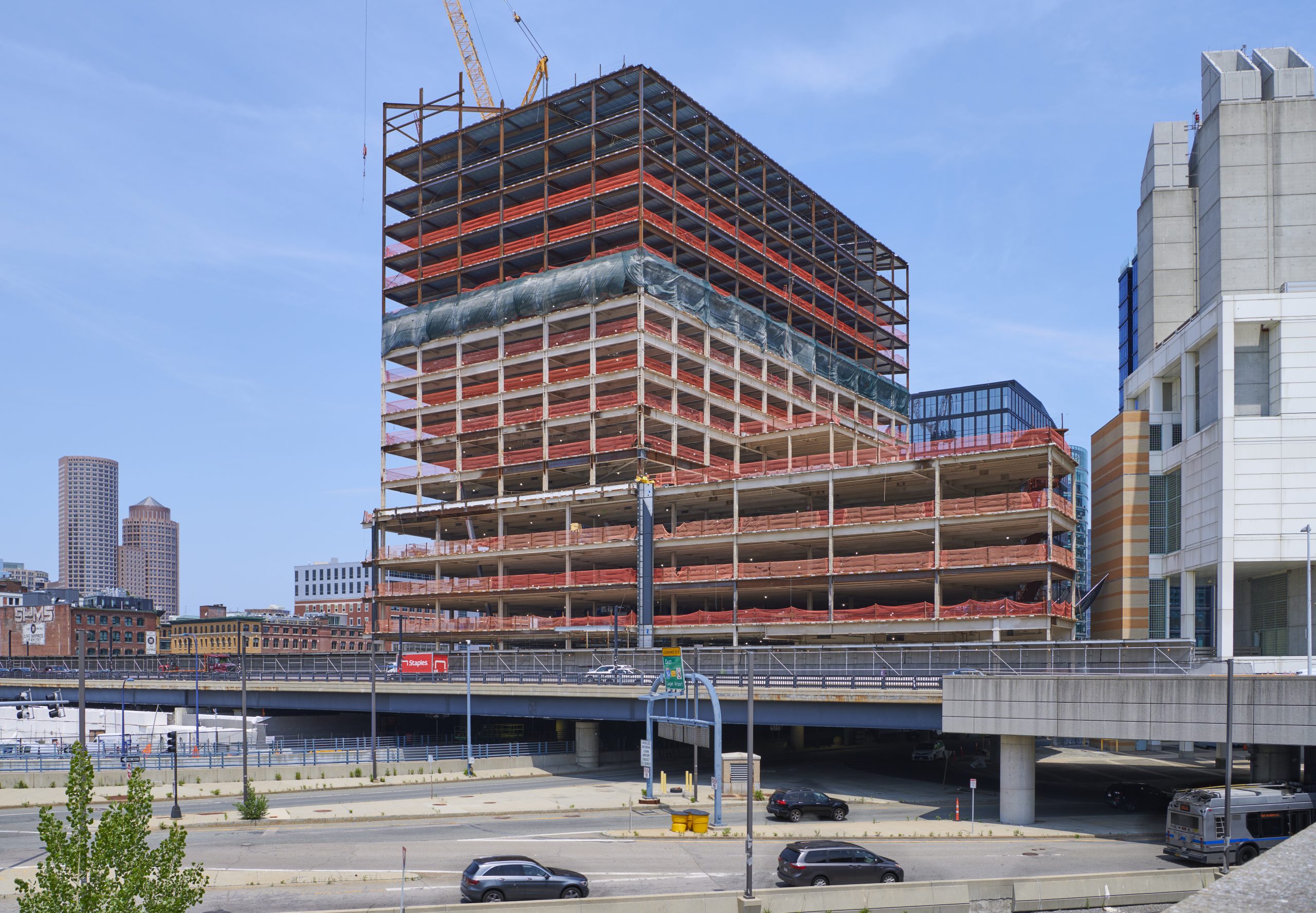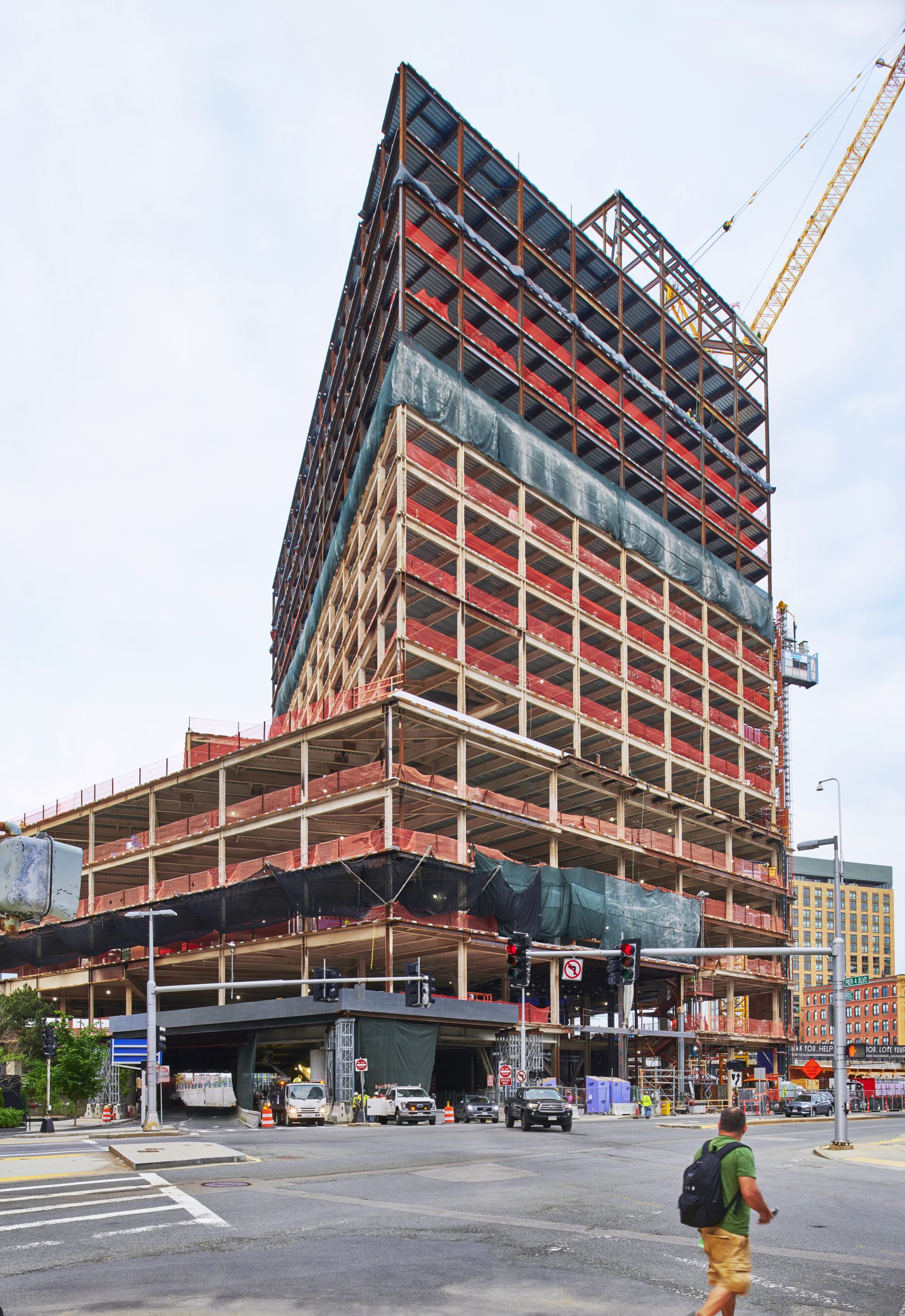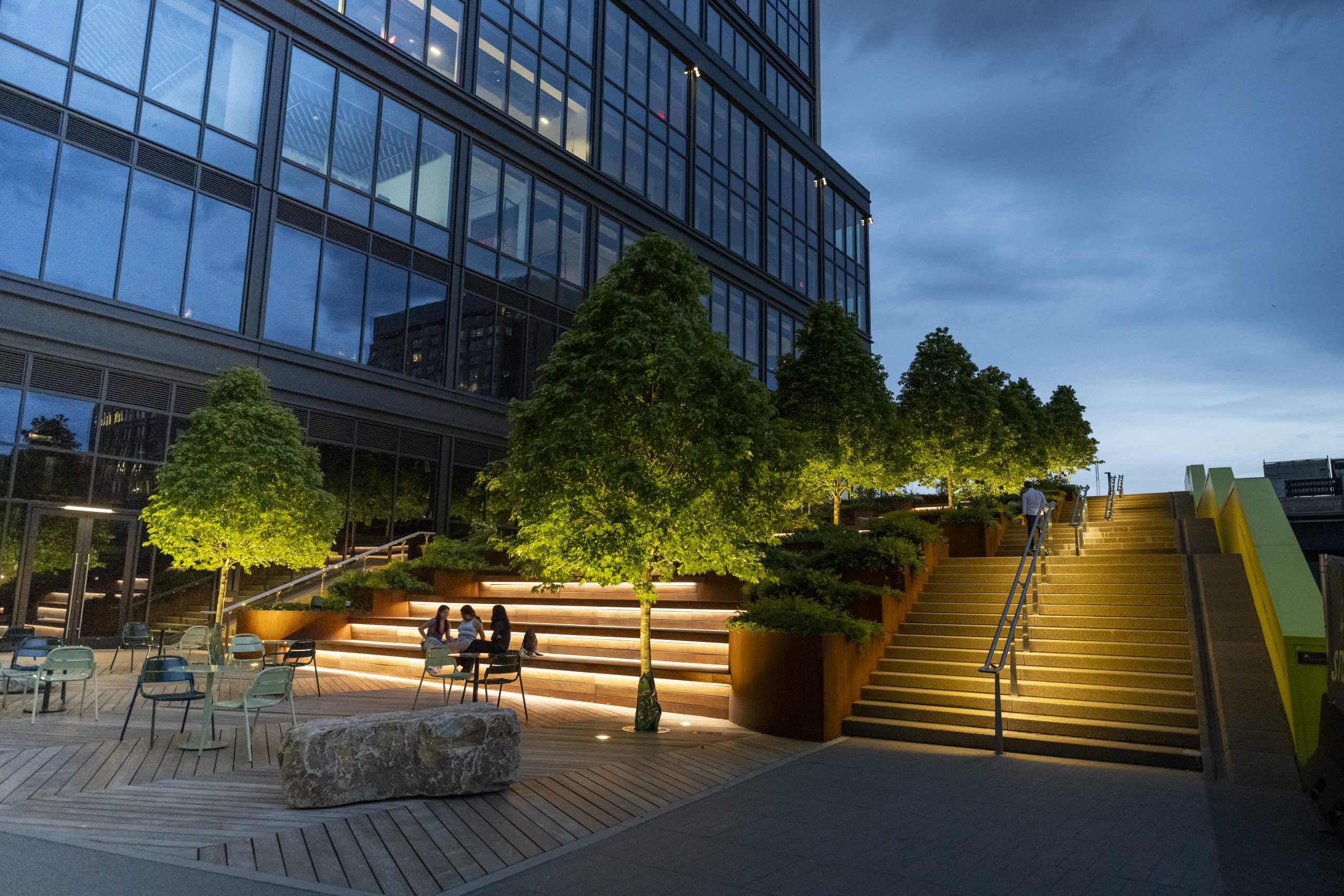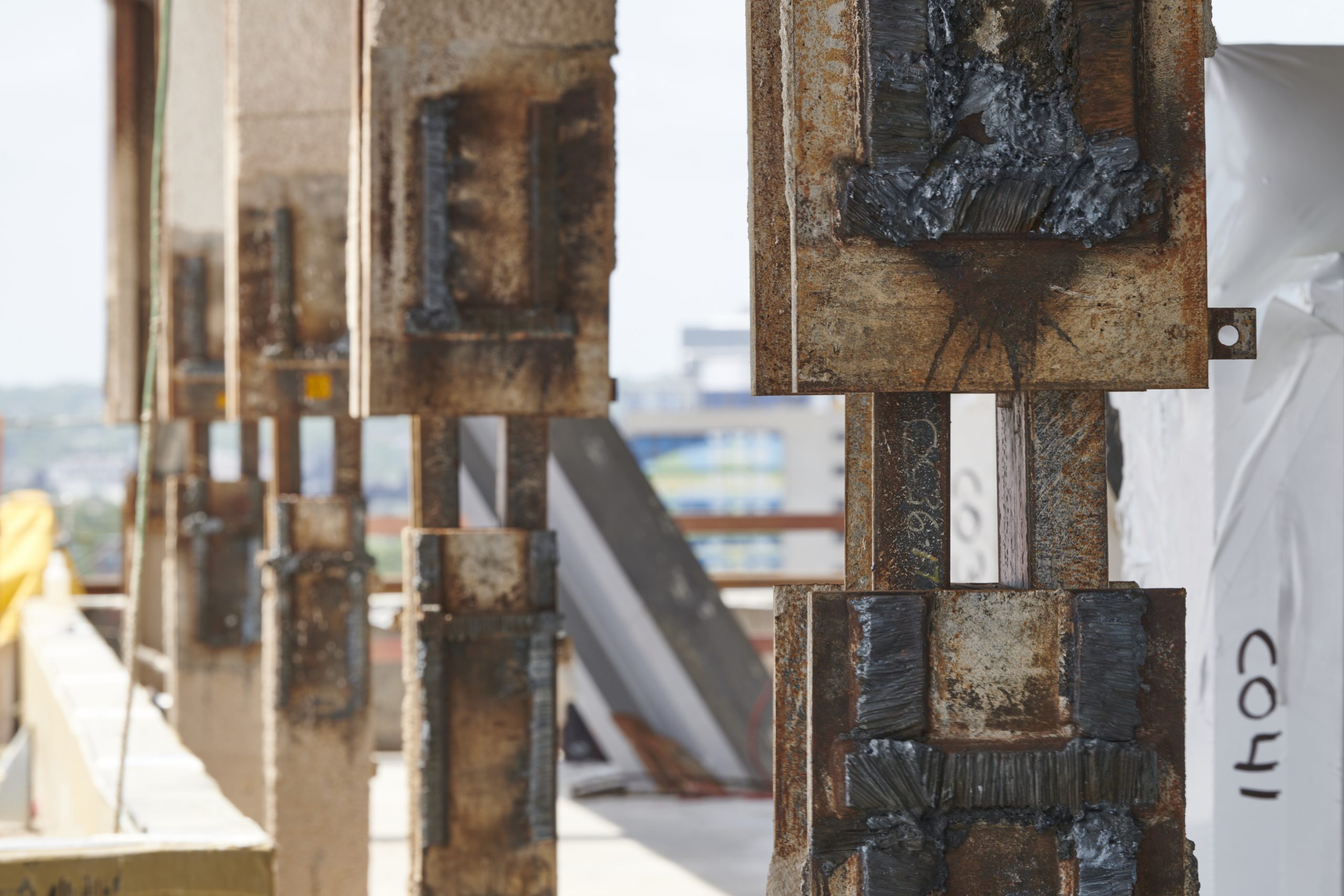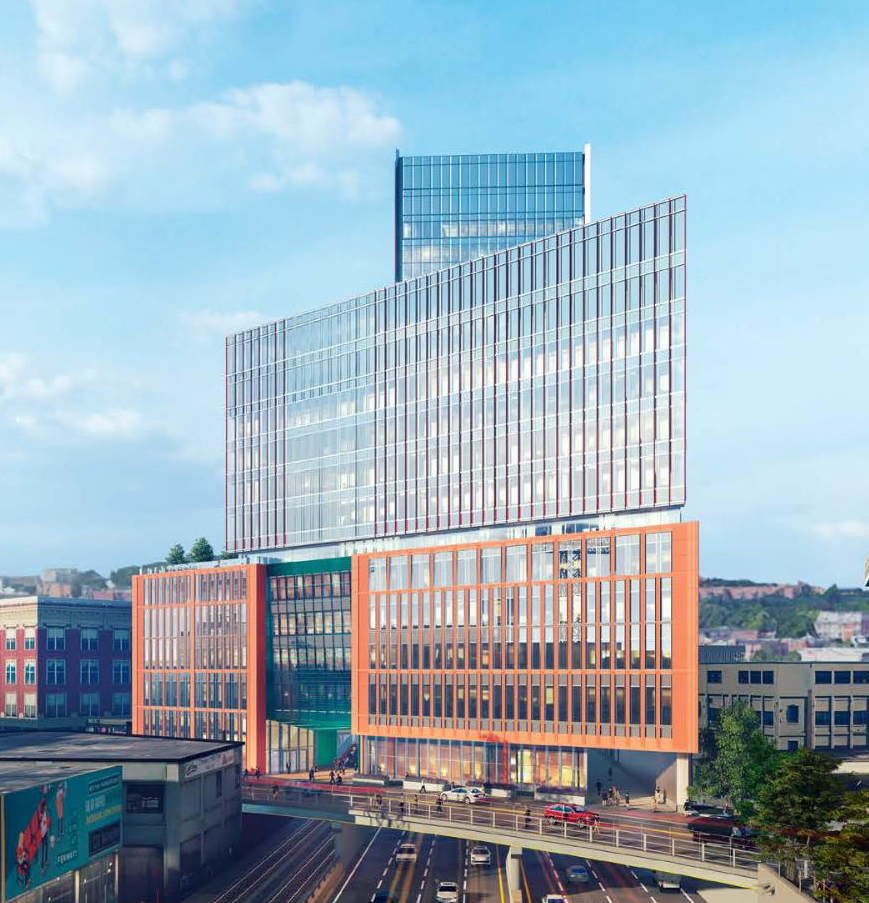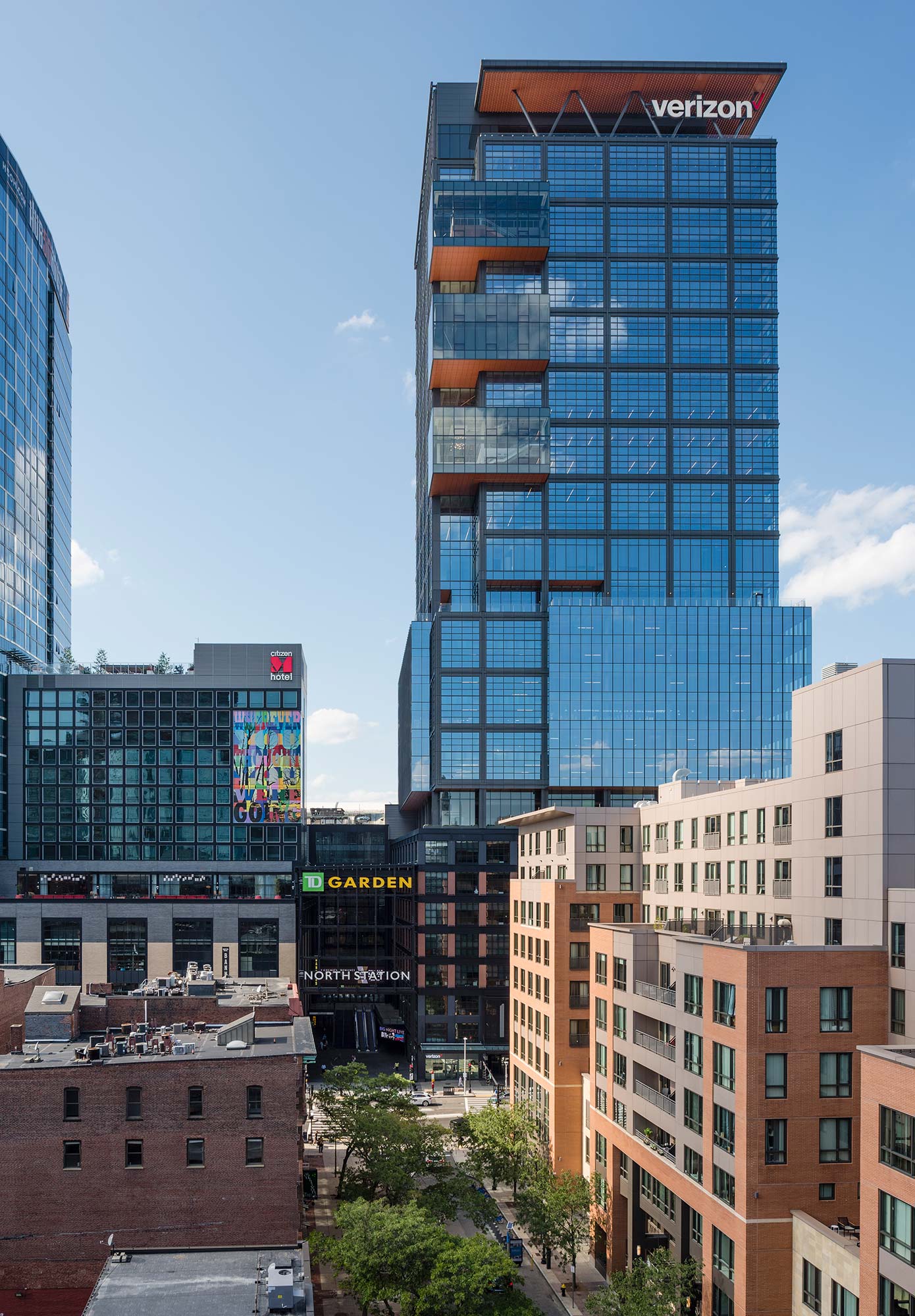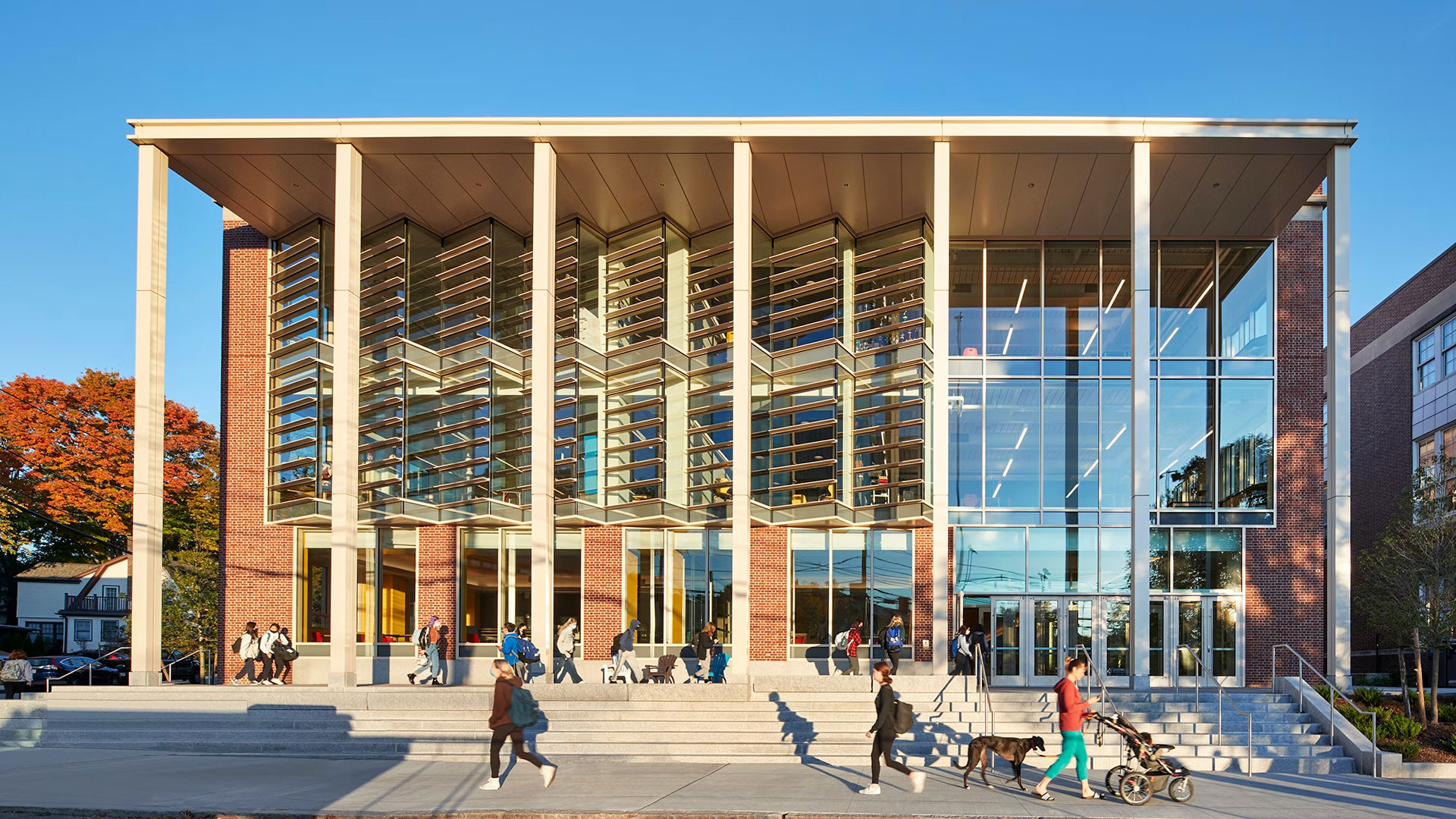400 Summer Street & The Summer Steps
At sixteen stories and 260 feet tall, 400 Summer is a 630,000-square-foot mixed-use building of labs and offices with ground-floor retail atop three levels of below-grade parking. The project was built to suit Foundation Medicine, its primary tenant, which relocated its headquarters to this one-of-a-kind building in Boston’s Seaport District.
400 Summer Street sits on a complex air rights parcel over the Massachusetts Turnpike tunnel, ramps, and adjacent roadways. The Massachusetts Department of Transportation (MassDOT) included loading capacity for a five-story commercial office building, which was typical of the neighborhood at the time, in the design of its Central Artery Tunnel (“Big Dig”) infrastructure. As Boston’s Seaport District evolved, the context changed to favor taller buildings, and the developers of 400 Summer Street sought to maximize the height and FAR of the site; thus, designers were challenged to build a nineteen-story tower on foundations designed to support only five. The building's structure was designed to maximize the capacity available in the existing foundations and shed excess loads away from the air-rights zone to where new foundations could be installed. The solution combines transfer girders, sloping columns, a multi-story Vierendeel truss, lateral camber of the building columns, and carefully sequenced hydraulic jacking during construction to prevent the tower from overloading the existing foundation “landing points,” and keep the asymmetric structure plumb as it was erected.
Key engineering features:
- Transfer girders were used to align the building grid over the tunnel with existing foundation elements that were installed thirty years earlier
- Sloping columns were used to shed excessive tower loads away from the air-rights zone
- A multi-story Vierendeel truss was used to transfer loads from the perimeter tower columns to the sloping columns
- Lateral camber was specified for the building columns to counterbalance the lurching effect of the asymmetrically positioned sloping columns
- To allow for an orderly erection sequence, the transfer girders were used to support construction loads until the Vierendeel truss was engaged
- When the truss was complete and the sloping columns were fully engaged, hydraulic jacks were used to disconnect the columns at level seven, redirecting loads away from the existing foundations, preventing them from being overloaded
Completed in 2024, the LEED Platinum-certified structure's high-performance systems reduce energy consumption to one-third of the national average for similar buildings.

